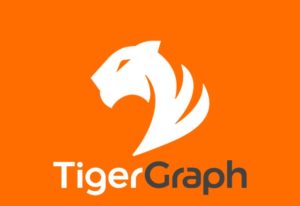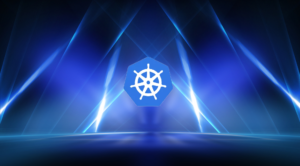
TigerGraph Bolsters DB for Enterprise Graph Workloads

(ra2 studio/Shutterstock)
When Mingxi Wu took over as CEO of TigerGraph five months ago, he promised that the company would return to focusing on the development of product features demanded by the biggest customers. That focus appears to be playing out with today’s announcement of TigerGraph version 3.9.3, which brings a host of new capabilities tailormade for enterprise environments.
TigerGraph was founded in 2012 with plans to build a distributed graph database that could scale to meet the most demanding data processing and analytic needs of Fortune 500 companies. While it attracted many large customers in financial services and other demanding industries, the Redwood City, California company ran into financial trouble in 2022, leading to the departure of then-CEO and founder Yu Xu and the promotion of Wu, the head of engineering, into the top role. (Xu remains with the company as CTO.)
During the Databricks Data + AI Summit earlier this year, Wu told Datanami that the company was getting back to its enterprise big data roots. “I’m a product guy,” Wu said in June. “I know the architecture. I know what things are hard and what things TigerGraph can solve and what no other vendor can solve.”
That focus on addressing the concerns of the biggest customers with the biggest data challenges is evident in today’s launch of TigerGraph version 3.9.3, which brings new features like support for Kubernetes, new data integrity checks, new workload management features, and support for the OpenCypher graph query language.
Kubernetes has become the defacto standard for running container-based workloads, so it’s not a surprise that TigerGraph would put the engineering work into ensuring its database can run there. According to Victor Lee, TigerGraph’s director of product marketing, the new release of the TigerGraph database features a preview of support for Kubernetes versions 1.23 through 1.27.
“TigerGraph is evolving so that the entire software stack is containerized and can be deployed and managed with Kubernetes,” Lee tells us. “This is especially helpful for TigerGraph users who are taking advantage of our support for clusters, whether that is because they have a distributed database, or clusters for high availability, or differently resourced clusters for different types of workloads.”
The preliminary support for Kubernetes will also allow TigerGraph customers to scale compute and storage independently of one another through their K8s console, Lee says.
“It’s not just a TigerGraph server as one container, but it’s broken down to lower-level components,” he continues. “The system designer uses Kubernetes to state what performance or operational parameters they want, and Kubernetes takes care of the deployment and maintenance operations to achieve those parameters. For example, to scale out to more storage or more compute resources, the user would simply state their objective in the familiar Kubernetes framework.”
The new workload management capabilities should also help to provide a more balanced TigerGraph implementation by automatically assigning query tasks to the least-busy resources.
All databases occasionally run into data integrity issues. With graph databases, where data ingestion has historically been the bottleneck, having trust in the data is even more important. The new data integrity checks that TigerGraph built with version 3.9.3 should help enterprise customers stay on top of these little data gremlins during the data load process.
“TigerGraph can import terabytes of data at high speed using Kafka,” Lee says. “Data engineers want to know quickly if there is an issue with the data ingestion. Is there an issue with the format of their input data? Is there an ETL logic problem? Hardware or network issue? TigerGraph is checking the consistency of what gets sent by Kafka with what gets received by our data update queue. How many vertices and edges of each type were sent, and how many were received and acknowledged? We’re planning to add even more checks to help data engineers have even more visibility into what is happening in the system.”
TigerGraph customers have traditionally written their graph queries using GSQL, a graph-specific variant of SQL. With the new release, TigerGraph is supporting OpenCypher, a graph query language based on the Cypher language originally developed by its property graph database competitor Neo4j and released as open source, where it has gained a considerable amount of traction.
Supporting OpenCypher makes it easier for users who already know that query language to get started using the TigerGraph database, Lee says.
“All they have to do is drop their OpenCypher query inside a GSQL wrapper, and TigerGraph translates their OpenCypher into GSQL and runs it,” he says. “We currently support about 80% or 90% of OpenCypher. TigerGraph is the only distributed graph database that scales out. We’ve had several customers who started out using a Cypher product and then outgrew it, and so migrated to TigerGraph. This OpenCypher support will make that easier for them.”
However, GSQL continues to have features that OpenCypher doesn’t, Lee says, such as accumulators, which is a family of data objects with built-in operators for multi-threaded accumulation.
“They are a powerful and simple way to accomplish analytics and implement graph algorithms,” the TigerGraph marketing director says. “GSQL is also procedural, with input parameters, local variables, and flow control like loops and conditional statements. It really makes it very natural for users to implement the algorithms of their choice. OpenCypher doesn’t have that. OpenCypher is a good general-purpose database query language, especially for graph pattern-matching. GSQL does more: it lets you design and run analytical and algorithmic programs.”
TigerGraph also announced it has hired Hamid Aazawe to be its new vice president of product. Azawe has decades of experience in product management and engineering at Microsoft, Amazon, IBM, Bloomberg, and Meta. Azzawe says he’s excited to work with the new release.
“With this latest release, developed in conjunction with our customers, TigerGraph continues to fine-tune its products so they meet and exceed customer expectations for enterprise-level graph technology,” Azzawe says.
TigerGraph version 3.9.3 will be available this month for the company’s on-prem and cloud customers. For more information, see www.tigergraph.com.
Related Items:
New TigerGraph CEO Refocuses Efforts on Enterprise Customers
TigerGraph Cloud’s New Capabilities Help Close the Data and Decision Gap



























